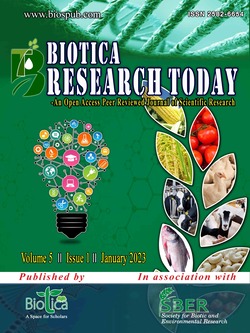
Innovative and Disruptive Technologies for Aquaculture
Saiprasad Bhusare
ICAR-Central Institute of Fisheries Education, Mumbai, Maharashtra (400 061), India
Bhautik D. Savaliya
ICAR-Central Institute of Fisheries Education, Mumbai, Maharashtra (400 061), India
Vikas Kumar Ujjania*
ICAR-Central Institute of Fisheries Education, Mumbai, Maharashtra (400 061), India
Chahat Sevak
College of Fisheries, MPUAT, Udaipur, Rajasthan (313 001), India
DOI: NIL
Keywords: Aquaculture, Artificial intelligence, Machine learning, Smart fish farming
Abstract
The demand for food is growing at a pace with the global population. As the population continues to grow, the pressure on the world's fisheries will continue to increase. The aquaculture industry faces several challenges, including high mortality, disease, feed spill, poor fish welfare, and high water utilization rate. Smart fish farming refers to a new scientific field whose objective is to optimize the efficient use of resources and promote sustainable development in aquaculture through deeply integrating the Internet of Things (IoT), big data, cloud computing, and artificial intelligence. Through Artificial intelligence (AI) fisheries sector can develop rapidly and production can be quadrupled within a short period, making aquaculture a less labor-intensive field. This will help in the tremendous growth of the fisheries sector as the situation of the culture system changes frequently according to the surrounding. Thus, the application of Al seems to be unavoidable in the further development and intensification of fisheries and aquaculture.
Downloads
not found
Reference
dos Santos, A.A., Gonçalves, W.N., 2019. Improving Pantanal fish species recognition through taxonomic ranks in convolutional neural networks. Ecological Informatics 53, 1-11. DOI: https://doi.org/10.1016/j.ecoinf.2019.100977.
Garcia, R., Prados, R., Quintana, J., Tempelaar, A., Gracias, N., Rosen, S., Vågstøl, H., Løvall, K., 2019. Automatic segmentation of fish using deep learning with application to fish size measurement. ICES Journal of Marine Science 77(4), 1354-1366. DOI: https://doi.org/10.1093/icesjms/fsz186.
Su, X.D., Sutarlie, L., Loh, X.J., 2020. Sensors, biosensors, and analytical technologies for aquaculture water quality. Research 2020. DOI: https://doi.org/10.34133/2020/8272705.
